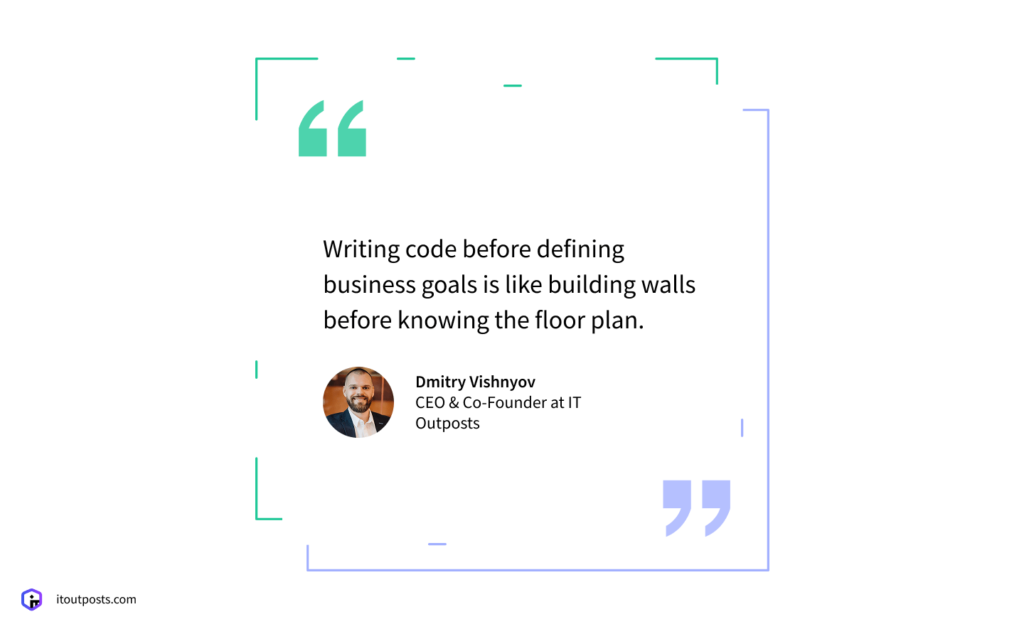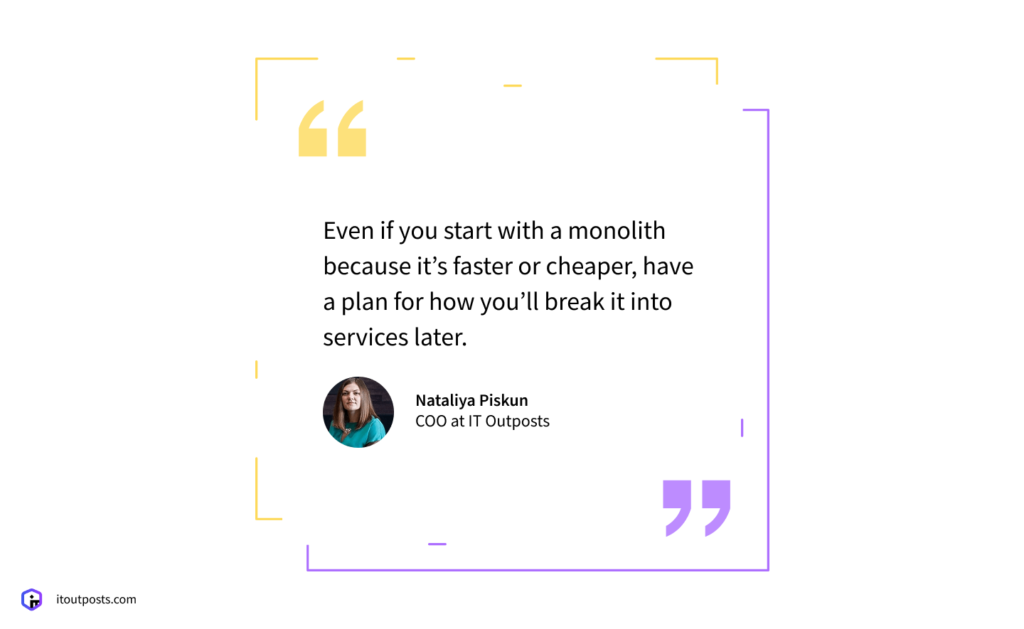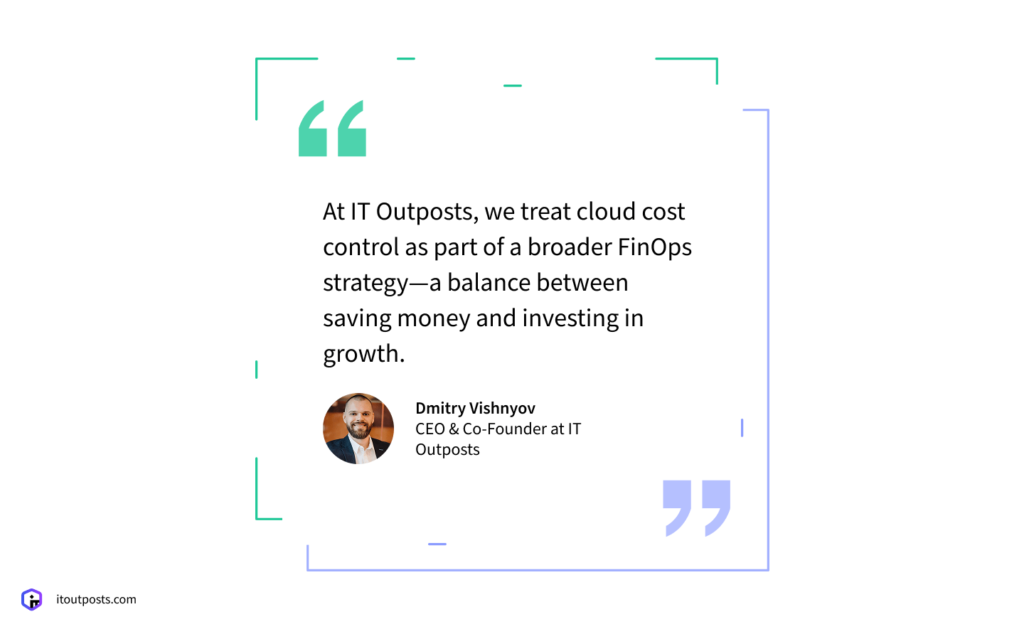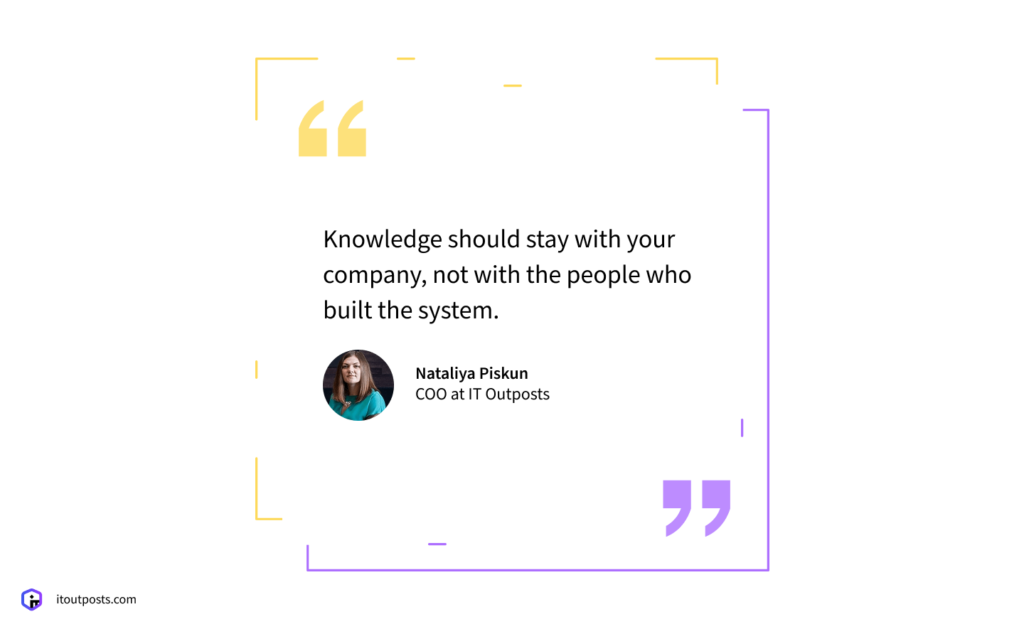Contents
After setting up infrastructure for more than 50 companies, from early-stage startups attracting their first customers to enterprises entangled in years of legacy code, we started noticing patterns.
No two projects were the same, yet the challenges often felt eerily familiar.
Here’s what 50+ infrastructure setups taught us.
Lesson 1: Infrastructure Mirrors the Business, and Code Grows from It
In every company, the business vision should come first. The infrastructure should be based on this vision, and the code should be written to match the specifics of this infrastructure.
But in reality, it often happens the other way around.
Under pressure to release faster, developers start coding before the business side has clearly defined what success looks like and before the DevOps teams even get involved.
By the time we’re invited in, something already exists… And at this stage, we often have to build infrastructure that matches the existing code, rather than the business goals it was supposed to serve. Or developers face the tough choice of starting from scratch to realign the code with the business vision, which, of course, means extra time, resources, and investment.
It’s a reminder that DevOps isn’t just about infrastructure—it’s about translating business goals into infrastructure, and then matching code, starting with its first line, with this setup.

Lesson 2: Choosing Between Monolith and Microservices? The Smarter Choice Is the Latter
If you’re investing in custom software development, start with microservices in mind.
In a monolithic system, all features live under one roof. It works, but until you have to make a change. And even a small change, like adjusting the logic behind the “Buy” button, can require redeploying the entire application.
Furthermore, one mistake in this update can spread to the other parts of the system, slowing down releases and increasing the risk of downtime.
With microservices, each feature runs independently. That same “Buy” button lives in its own small, contained service, so if you need to fix it, you can do it without affecting the rest of the product. The rest of the site keeps working, customers keep browsing.
Even if you start with a monolith because it’s faster or cheaper, have a plan for how you’ll break it into services later.

Lesson 3: Cloud Flexibility Is an Advantage. Until You Lose Track of Spending
When companies move to the cloud, they usually do it with the best intentions—scalability, flexibility, faster delivery.
As the months go by, the early excitement is often replaced by growing cloud expenses.
For example, teams may spin up resources “just for testing” and then leave them running long after they’re no longer needed. Individually, each instance costs almost nothing. Together, they can accumulate thousands of dollars every month.
So, the truth is that cloud platforms make it easy to deploy, but they don’t make it easy to stay organized when it comes to cost-effectiveness. As infrastructure grows, so do the opportunities for overspending: oversized virtual machines, duplicated environments, and more.
That’s why cloud cost optimization needs to start long before you deploy your first workload.
Early architectural decisions, like the choice of a cloud provider, can lock your business into a pricing structure for years. Changing this later can be costly and disruptive, especially when migrations involve transferring terabytes of data and running both old and new systems in parallel.
At IT Outposts, we treat cloud cost control as part of a broader FinOps strategy—a balance between saving money and investing in growth. We turn off non-production environments outside working hours, fine-tune auto-scaling to match traffic patterns, and stay alert to provider pricing changes are all simple, high-impact steps.

At the same time, we recommend spending more when needed: investing in automation to prevent outages that lead to financial losses. Because operating at the bare minimum might save a few dollars today, but it can cost you entire customers tomorrow.
Lesson 4: You Can’t Manage What You Can’t See. Monitor Both the Infrastructure and the App
Some teams focus their monitoring on infrastructure: CPU, memory, storage, uptime. It’s a good start, but it’s only half the picture.
You can have perfectly healthy servers while the application itself is experiencing hidden performance issues. Maybe database connections aren’t closing properly, or certain processes are consuming more memory than expected. In fact, database connections not closing properly is a classic application-level issue that won’t necessarily trigger an infrastructure alert, but will severely degrade performance over time.
True stability comes when you monitor both the infrastructure and the application layer together. This means every component of your system, from the API to the payment gateway, needs to generate meaningful metrics and logs.
Lesson 5: Documentation Is Your Insurance Policy
When a DevOps partnership ends, your infrastructure shouldn’t become a mystery.
Documentation ensures knowledge doesn’t leave with your DevOps partner.
When something goes wrong, clear documentation enables your team to resolve issues quickly.
You won’t experience costly downtime simply because no one remembers where the logs are located. Plus, new hires won’t have to spend weeks trying to understand existing setups.
That’s why, at IT Outposts, we treat documentation as an essential part of every engagement. Every system we deliver includes a comprehensive knowledge package that explains how your infrastructure works, how to maintain it, and how to recover it in case of a failure.

How We Turn These Lessons into Lasting Infrastructure
Of course, while these are just some of the top lessons, there’s much more to what fifty-plus infrastructure setups have taught us. Every project, every migration, every sleepless night added another insight, and we’ve captured them all.
Over time, we realized we didn’t just want to keep these lessons in a handbook; we wanted to build them into a real, working framework.
And so, we gained several valuable lessons in the second part of our series.
That’s how AMIX was born—a production-ready infrastructure built on proven DevOps principles, 20+ integrated tools, and complete documentation that lets your team take full ownership from day one. It’s the practical outcome of solving the same kinds of challenges businesses face every day.
If you’re ready to see what your infrastructure could look like when it’s built on experience, not trial and error, let’s talk.
And while you arrange a meeting with us, get AMIX for free to experiment with it right away and explore its full potential.

I am an IT professional with over 10 years of experience. My career trajectory is closely tied to strategic business development, sales expansion, and the structuring of marketing strategies.
Throughout my journey, I have successfully executed and applied numerous strategic approaches that have driven business growth and fortified competitive positions. An integral part of my experience lies in effective business process management, which, in turn, facilitated the adept coordination of cross-functional teams and the attainment of remarkable outcomes.
I take pride in my contributions to the IT sector’s advancement and look forward to exchanging experiences and ideas with professionals who share my passion for innovation and success.